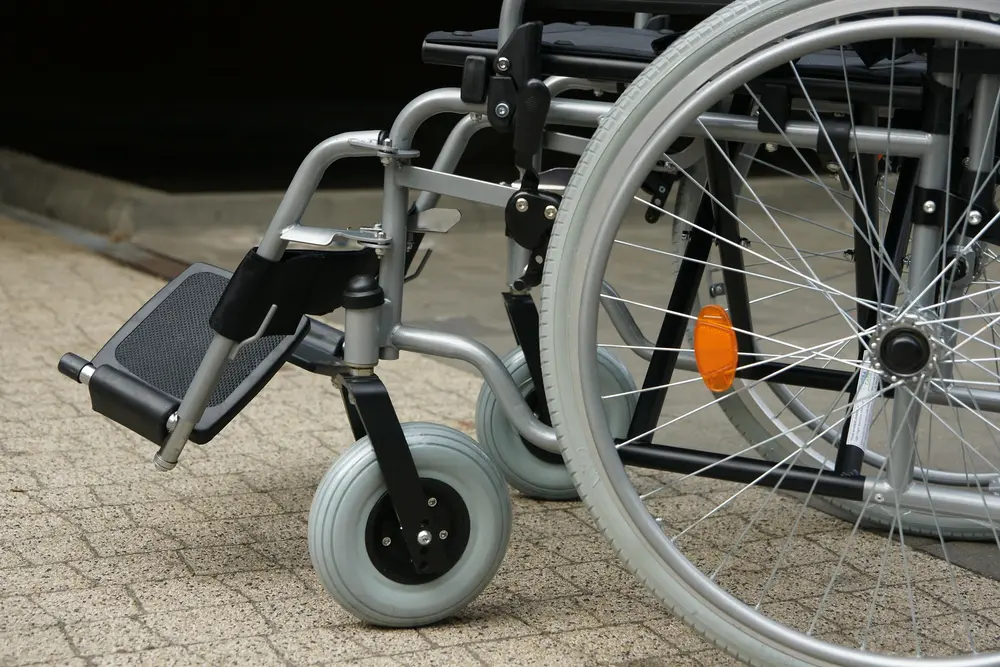On April 2, 2021, the Social Security Administration (SSA) made extensive revisions to their listing of impairments specific to musculoskeletal disability and related disorders. The criteria used to evaluate Social Security disability claims related to all types of musculoskeletal impairments was updated for multiple reasons. These include public feedback regarding the listing, advances in medical knowledge, and “adjudicative experience.”
Why does this matter?
In order to receive Social Security Disability Insurance (SSDI) benefits, all adult disability claims are evaluated under Social Security’s 5-Step Sequential Evaluation Process. Meeting, or equaling in severity, the criteria of at least one of SSA’s listed impairments is Step 3 of this process. Requirements for children with disabilities differ, but if a child’s disability(ies) meets or equals in severity a listed impairment, then the claim will be approved based upon the listing.
Because of this, it is important to know how these revisions will affect the thousands of Americans with musculoskeletal disability-related claims.
Musculoskeletal Disability
Musculoskeletal disorders or impairments are those related to back, spine, connective tissue, and joint ailments. Amputations and broken bones are also included in the category.
Both adults and children are included in the category, although they differ some in disability qualifiers. For example, adults with a musculoskeletal disability must be unable to perform work-related tasks as a SSD qualifier. Alternately, children must struggle to perform age-appropriate tasks as a qualifier. The Social Security Listing of Impairments defines adults as individuals aged 18 or older in their Part A listings, and those younger than 18 are outlined in their Part B listings.
Listing Revision Timeline
The changes to the Social Security Musculoskeletal Disability Listing were first announced in the Federal Register in December of 2020. However, the revisions did not take effect until April 2nd, 2021. The Federal Register explained that this delay was to provide both time to update government systems and educate adjudicators on how to assess disabilities in light of the new changes.
Since the recent changes have taken effect, claims filed on or after April 2nd, or those pending during that time, have been subject to the new SSD rules.
Prior to these new changes, the musculoskeletal listing had not been updated since November 19th, 2001 (with changes taking effect in 2002).
Why Are These Changes Being Made?
In May of 2018, a Notice of Proposed Rulemaking (NPRM) was published in the Federal Register in regard to the evaluation process for musculoskeletal impairments. Medical organizations, advocacy groups, legal organizations, and individuals were all represented in the NPRM comments. Although many proposed changes from the public comments were adopted, some were not.
The feedback in response to the NPRM, combined with adjudicative review and increased medical knowledge surrounding these disorders, influenced the final guidelines. According to the Social Security Administration (SSA), the new criteria should “increase consistency, clarity and equity in our determinations and decisions across adjudicative levels.”
The SSA notes that prior to the changes, there may have been more inconsistency in assessments due to a lack of clarity around the term “inability to ambulate effectively.” One aim of the new rules is to promote equity and leave less open to interpretation in musculoskeletal disability claims evaluation.
Notable Changes to Listing Format
Some of the notable changes to the Social Security listing include:
- Overall formatting, as all the listings have been renumbered and have multiple elements.
- Spinal arachnoiditis is no longer included under musculoskeletal; instead it has been moved to a neurological listing (11.08).
- Spinal stenosis (1.16) now has its own musculoskeletal disability listing, independent from other spinal diagnoses.
- Pathologic fractures caused by disease now have their own listing, independent from trauma-induced pathologic fractures.
New Functional Criteria Changes
There are multiple new functional criteria in the listing. Due to the language alterations around ambulation and mobility in the new guidelines, evaluations of what constitutes a musculoskeletal disability will change.
Medical documentation such as MRI’s, pathology reports, and thorough doctors’ diagnoses will be necessary for those applying for SSDI and SSI. Without proper documentation, claims have a much higher chance of being denied.
Important functional criteria changes include:
- Inability to use both hands for work-related function (or developmentally-appropriate activities in the case of individuals under 18 years of age). Inability can be based on disease or because the individual is using both hands to operate a hand-held assistive device, such as a walker or crutches. The listing clarifies that a hand-held assistive device must be held onto and not carried to qualify as such.
- Previously, “inability to ambulate” was a disabling impairment, but this is no longer the case if the individual has one or both hands free and usable because they are in WSMD (wheeled or seated mobility device). Rather, how the individual’s upper extremities are affected by the WSMD is assessed as part of the functional criteria.
- Muscle strength will be assessed in relation to an individual’s age and impairments, using approved medical muscle strength grading systems/scales.
- Obesity will continue to be assessed as it affects the musculoskeletal system on a case by case basis.
These are some of the more notable changes to the functional criteria, but more changes can be found in the listing itself.
The Future of SSDI and SSI for Musculoskeletal Disorders
Unless the SSA revises these new rules or extends them, SSDI and SSI applications will be subject to these guidelines for the next five years. The initial evaluations for those with a musculoskeletal disability will be more stringent, in addition to reconsideration evaluations.
But fortunately, those with pre-existing benefits will not have their SSDI terminated as a result of the new musculoskeletal guidelines.
How Will These Changes Affect You?
It is possible that the more specific guidelines will increase Social Security Disability Insurance (SSDI) and Supplemental Security Income (SSI) denials, as the new criteria leaves less room for interpretation in evaluations. But an individual who doesn’t meet all the guidelines may still be eligible for SSDI and/or SSI at, dependent upon their residual functional capacity (RFC) and its effect upon one’s ability to perform past relevant work (Step 4), or any other work (Step 5).
If a claimant is denied at both the initial and reconsideration level of review, they will have access to a hearing with a vocational expert or medical professional. Having an attorney who concentrates their practice in disability claims and who assists in both the application process or claims appeal process can make all the difference. Additionally, having thorough medical documentation of all diagnoses, such as pathology reports, MRI’s, and doctors’ notes is crucial when applying for disability benefits. And remember, your attorney will not be paid unless your claim is approved and it results in past due benefits.
Are you or someone you love suffering from a musculoskeletal disability or related disorder? Contact Richard I. Feingold & Associates, P.C. today to learn more about Social Security Disability Insurance and Supplemental Security Income benefits, and your eligibility for these important programs.







